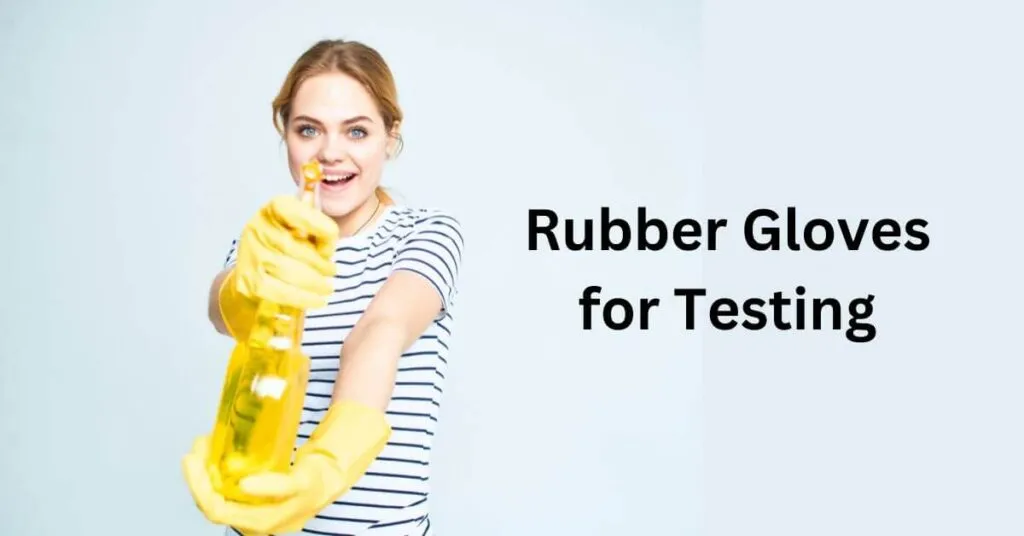Rubber Gloves for Testing: Safeguarding Lives and Ensuring Accuracy – In the realm of scientific research, medical examinations, and various laboratory settings, safety and accuracy are paramount. One crucial aspect of ensuring both is the use of rubber gloves for testing purposes. These gloves act as a protective barrier between the hands of researchers, medical professionals, and laboratory technicians and the substances they handle. In this blog, we will explore the significance of rubber gloves for testing, highlighting their importance in safeguarding lives, maintaining hygiene standards, and obtaining accurate results.
I. Ensuring Personal Safety
1. Protection from Harmful Substances:Rubber gloves act as a reliable shield against potentially hazardous chemicals, biological samples, and other harmful substances. They help prevent skin contact, reducing the risk of chemical burns, skin irritation, and contamination.
2. Minimizing Cross-Contamination: In research and medical settings, cross-contamination can lead to inaccurate results or even dangerous consequences. By using rubber gloves, professionals can minimize the risk of transferring contaminants from one sample to another.
3. Pathogen Transmission Prevention: In medical environments, rubber gloves play a crucial role in preventing the transmission of pathogens from patients to healthcare workers and vice versa, safeguarding both parties.
II. Hygiene and Infection Control
1. Medical Procedures: During medical examinations, surgeries, and procedures, rubber gloves maintain a sterile environment. They prevent the transfer of bacteria and viruses, reducing the risk of post-operative infections and other complications.
2. Laboratory Work: In laboratory settings, maintaining a sterile environment is vital to obtain accurate results. Rubber gloves are an essential part of the standard laboratory attire, ensuring that experiments remain contamination-free.
III. Accuracy in Testing and Research
1. Sample Integrity: Rubber gloves ensure that samples remain untainted during handling, preserving their integrity and preventing false results due to external contamination.
2. Consistent Results: By eliminating the risk of contamination, rubber gloves contribute to the consistency of test results. Researchers can rely on the accuracy of their findings, leading to more dependable conclusions.
3. Precision and Finesse: In intricate laboratory procedures, such as DNA analysis or microdissection, the use of rubber gloves enables researchers to handle delicate materials with precision and finesse.
IV. Types of Rubber Gloves for Testing
1. Latex Gloves: Latex gloves offer excellent elasticity, comfort, and dexterity. However, due to potential latex allergies, some individuals may opt for alternatives.
2. Nitrile Gloves: Nitrile gloves are an excellent substitute for latex gloves, as they are hypoallergenic, resistant to chemicals, and provide similar flexibility and durability.
3. Vinyl Gloves:Vinyl gloves are cost-effective and suitable for light-duty tasks, but they offer less resistance to chemicals compared to latex or nitrile gloves.
V. Proper Glove Usage and Disposal
1. Correct Sizing: Properly fitting gloves ensure maximum dexterity and reduce the likelihood of tears or punctures during usage.
2. Regular Changes: Regularly changing gloves, especially between tasks or after handling different substances, maintains hygiene and prevents cross-contamination.
3. Proper Disposal: Disposing of used gloves in designated receptacles is essential for preventing further contamination and maintaining a clean environment.
Conclusion
Rubber gloves for testing are not just a formality but a critical aspect of ensuring safety, maintaining hygiene, and obtaining accurate results in various fields of science, medicine, and research. By donning these simple yet effective protective barriers, professionals uphold the standards of their respective industries and protect lives. Whether it’s preventing exposure to harmful substances, reducing the risk of infections, or ensuring reliable research outcomes, rubber gloves play a pivotal role in safeguarding both those conducting tests and the integrity of the results they produce.


